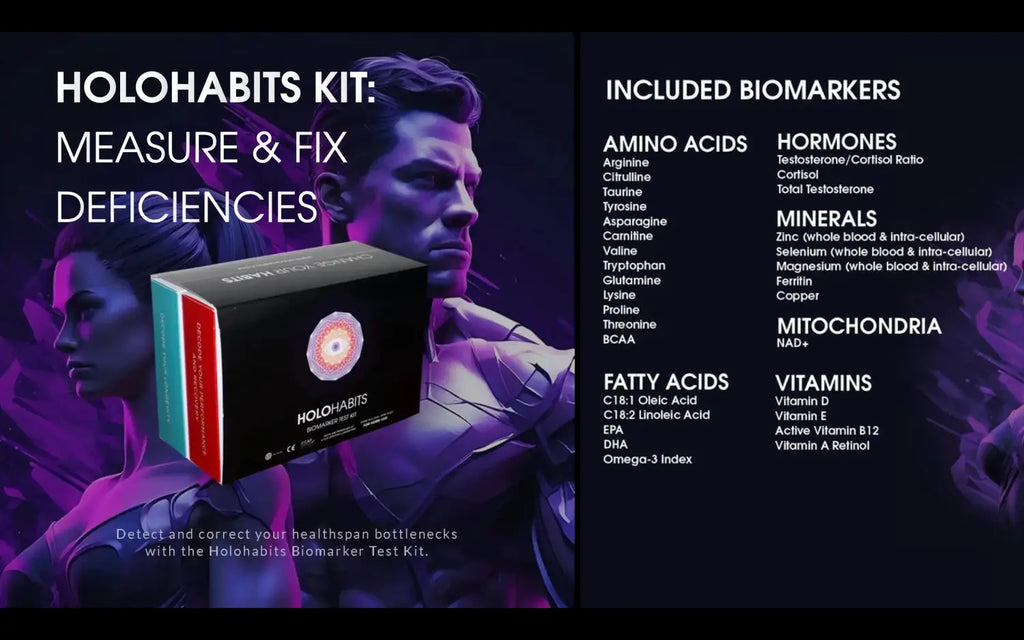In the quest for a longer, healthier life, the primary goal is to increase one's healthspan—the period of life spent in good health, free from chronic diseases and disabilities. This guide outlines the top 10 habits for longevity, derived from cutting-edge research and practical insights shared by Dr. Olli Sovijärvi. These habits are rooted in optimizing daily life, from sleep and diet to physical activity, social connections, and advanced interventions such as supplementation and photobiomodulation. All scientific references are found at the end of the article.
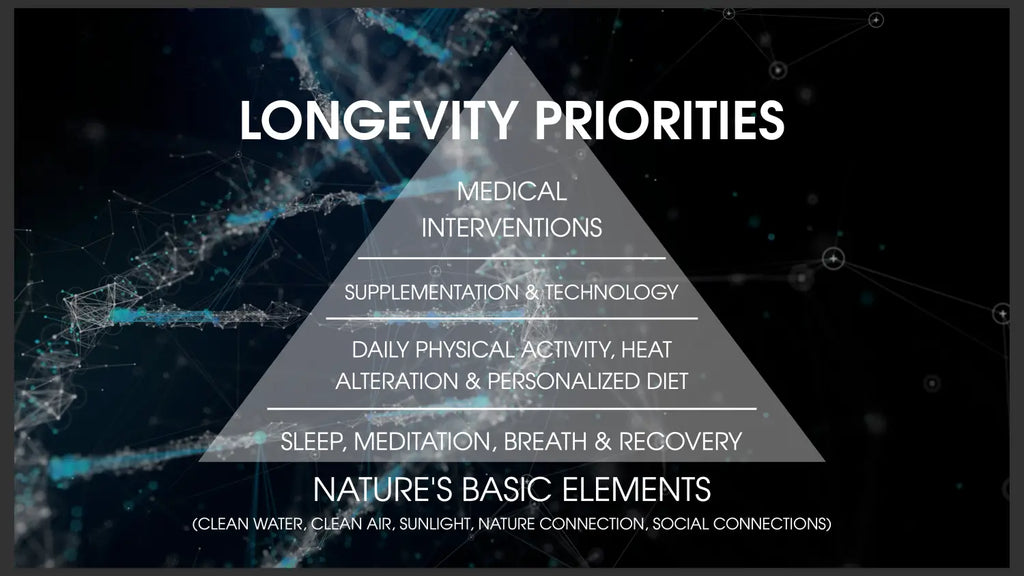
1) Optimal Sleep
Importance of Sleep
Sleep is the cornerstone of health and longevity. Sleep deprivation and low-quality sleep are linked to various age-related pathologies and affecting hallmarks of aging, including:
- Genomic Instability
- Cellular Senescence
- Telomere Attrition
- Mitochondrial Dysfunction
- Loss of Proteostasis
One night of partial sleep deprivation can activate molecular processes associated with biological aging, promoting cellular senescence in older adults. High-quality sleep, however, is associated with reduced mortality risk and a lower incidence of cardiovascular diseases and metabolic disorders.
Benefits of Deep Sleep: Deep sleep enhances cognitive function, supports physical restorative processes, and reduces inflammation and oxidative stress. The goal is to achieve more than 2 hours of deep sleep (or 25% of total sleep time) every night.
Optimal Sleep Duration: Sleeping 7.5-8 hours per night is linked to the lowest mortality risk and better health outcomes. Aim for over 8 hours every night to maximize longevity benefits.
2) Circadian Rhythm Alignment
Health Maintenance: Proper alignment of circadian rhythms is essential for supporting metabolic processes, immune function, and cognitive performance. Higher circadian rhythmicity is linked to a longer lifespan, as observed in the offspring of long-lived families.
Mechanisms and Interventions: Robust circadian rhythms help regulate DNA repair, hormone release, and cell cycles, which are crucial for longevity.
2.5) Daily Sunlight Exposure
Key Longevity Zeitgeber – Sunlight:
Sunlight is a vital factor for longevity. It stimulates the synthesis of vitamin D, healing gene sequences, and beta-endorphins, which are crucial for mental and physical health.
Health Benefits
Regular and moderate sun exposure affects the following:
- Increases Vitamin D Synthesis
- Reduces Cardiovascular Risks
- Improves Mental Health (via enhanced circadian rhythms)
- Enhances Immunomodulation and Nitric Oxide (NO) Formation
However, it's essential to remember the concept of hormesis—beneficial effects of low doses of stressors like sunlight—and avoid excessive exposure to UV radiation, which can increase the risk of skin cancer.
Goal: Spend 5 minutes in the morning and 20 minutes midday in the sunlight to reap these benefits.
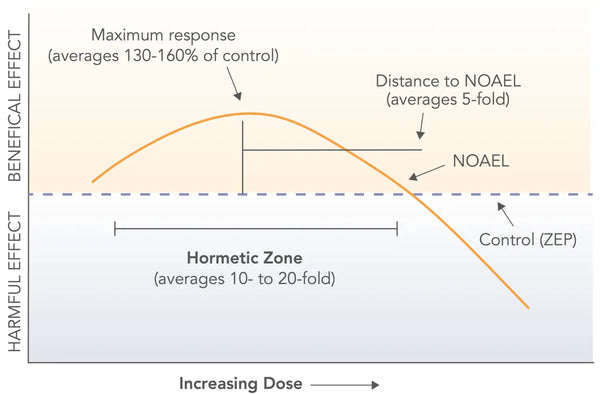
3) Daily Nature and Social Connections
Benefits of Nature Exposure:
- 10 Minutes in the Forest: Lowers blood pressure and pulse rate.
- 20 Minutes in the Forest: Enhances mood.
- 60 Minutes in the Forest: Improves attention and cognitive function.
- 120 Minutes in the Forest: Strengthens the immune system.
Live Longer Together Close to Nature:
Research shows that living in environments with greater natural diversity and engaging in social connections can improve quality of life and lower morbidity rates.
Strong social connections are linked to better psychological health and lower mortality rates, with friendships playing a critical role in reducing chronic illnesses and enhancing overall well-being.
Grounding Health Benefits:
- Stress Reduction
- Inflammation Reduction
- Improved Sleep
- Increased Energy
- Pain Relief
- Enhanced Recovery
4) Personalized Diet
Personal Dietary Guidelines (based on my genetic testing; for each individual, this may look different):
- Mediterranean-Style Diet: Increase lean protein intake to 25% of total calorie consumption.
- Essential Micronutrients: Ensure adequate intake of vitamins B2, B6, B12, Folate, and Choline.
- Manage Food Intolerances: Eliminate gluten.
- Limit Coffee: Restrict to one cup per day.
Biological Processes Management Guide:
- Support Lipid Metabolism
- Improve Methylation
- Increase Antioxidant Status
- Lower Inflammation
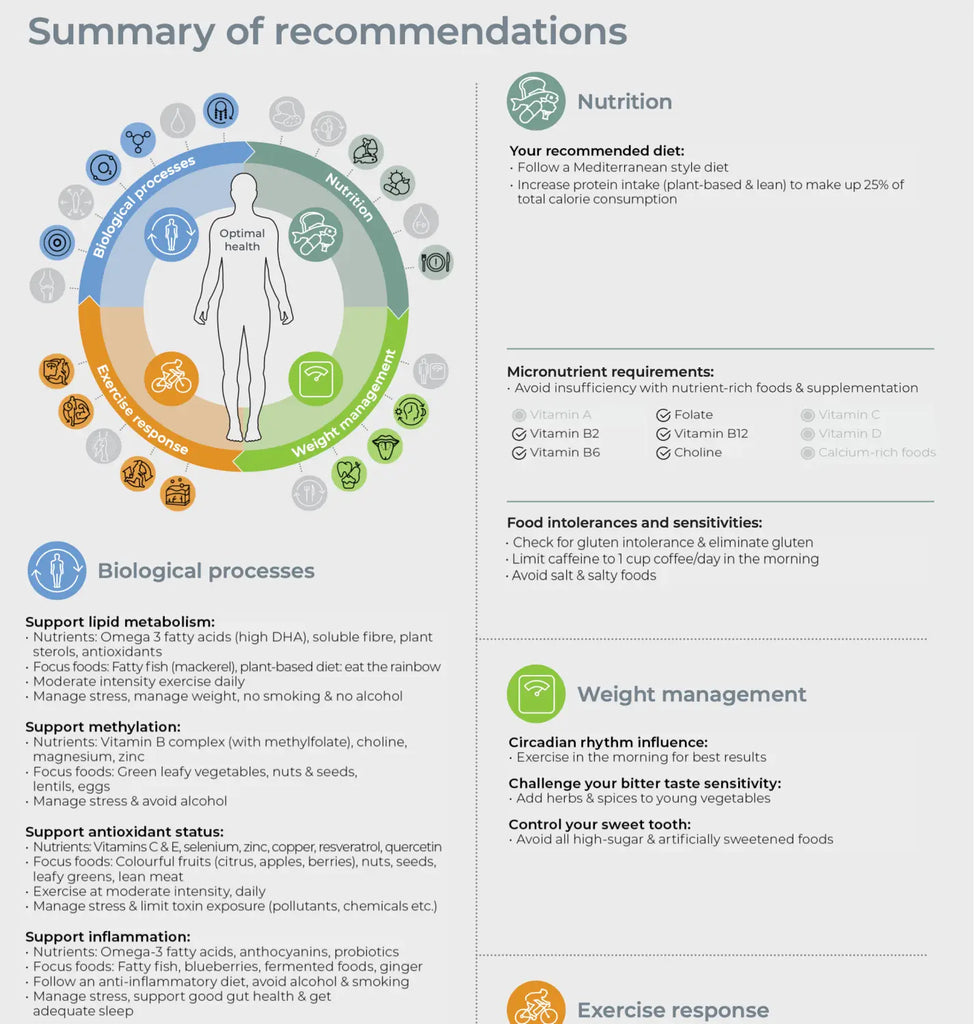
Get a comprehensive DNA test here to formulate your personal longevity diet.
Are there true longevity foods?
Mediterranean Diet is consistently associated with increased longevity and reduced risk of cardiovascular diseases, cancers, and other chronic conditions.
Antioxidant-rich foods like dark chocolate, berries, and leafy greens can reduce oxidative stress and inflammation.
Protein intake: Maintaining muscle mass and function throughadequate protein intake (e.g. lean meats, eggs & fish) is linked to improved longevity by reducing the risk of falls, fractures and related morbidity.
Extra-Virgin Olive Oil (EVOO): EVOO is the key longevity fat source, with a recommended 30-50 grams daily intake. It contains:
- Monounsaturated Fatty Acids: Cardioprotective effects and reduction of inflammatory biomarkers.
- Biophenols: Neuroprotective and antioxidative properties.
Grow Your Own Vegetables: Growing your own vegetables can ensure access to fresh, nutrient-rich produce, supporting a healthy, long life as seen with the blue zoners.
5) Physical Exercise & Body Maintenance
Exercise for Longevity
Physical exercise is essential for managing weight, improving endurance, and preventing injuries. A well-rounded exercise regimen includes:
- Endurance and Performance: Moderate to long-duration endurance exercises and low-to-high intensity strength/resistance training.
- Recovery and Injury Prevention: Adequate rest, good sleep hygiene, flexibility training, and joint health support.
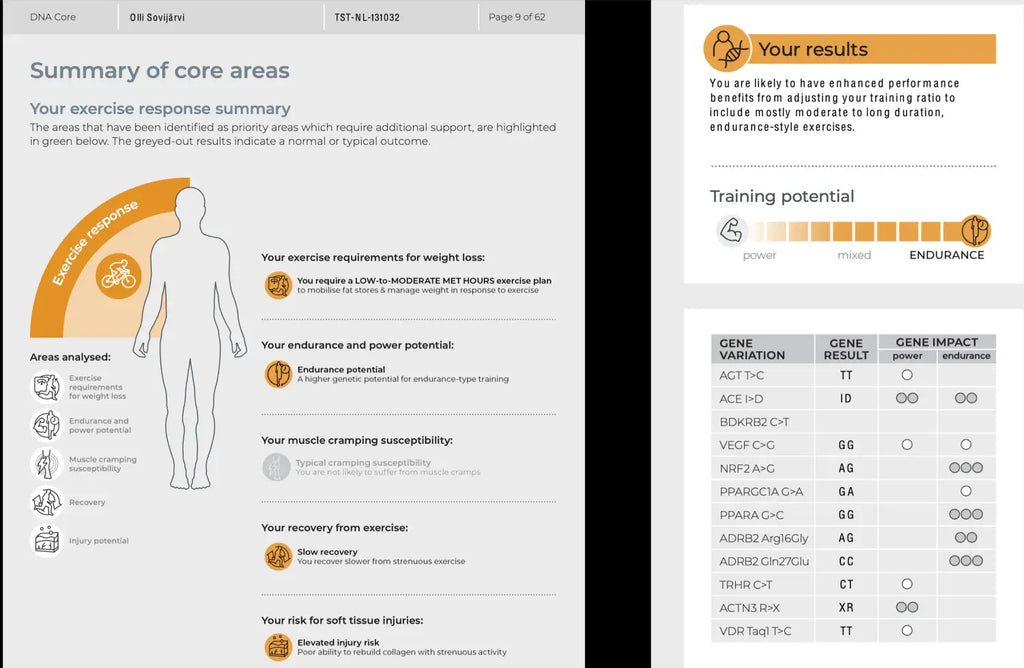
Science-based exercise regime for longevity
Cardiovascular Exercise: Engaging in cardiovascular exercise such as walking, cycling, or swimming for 150-300 minutes per week is linked to reduced mortality and increased lifespan. A high VO2max is particularly beneficial, with each 1 ml/kg/min increase reducing mortality risk by around 9%.
Strength Training: At least twice a week, strength training helps maintain muscle mass and metabolic health, contributing to a longer life expectancy by preventing age-related muscle loss.
Flexibility and Recovery: It is crucial for flexibility and recovery to include stretching, yoga or Pilates sessions for 30-45 minutes at least once a week.
Regular Body Maintenance: To maintain optimal physical health, consider integrating treatment modalities like acupuncture, osteopathy, and physiotherapy (myofascial release) once a month.
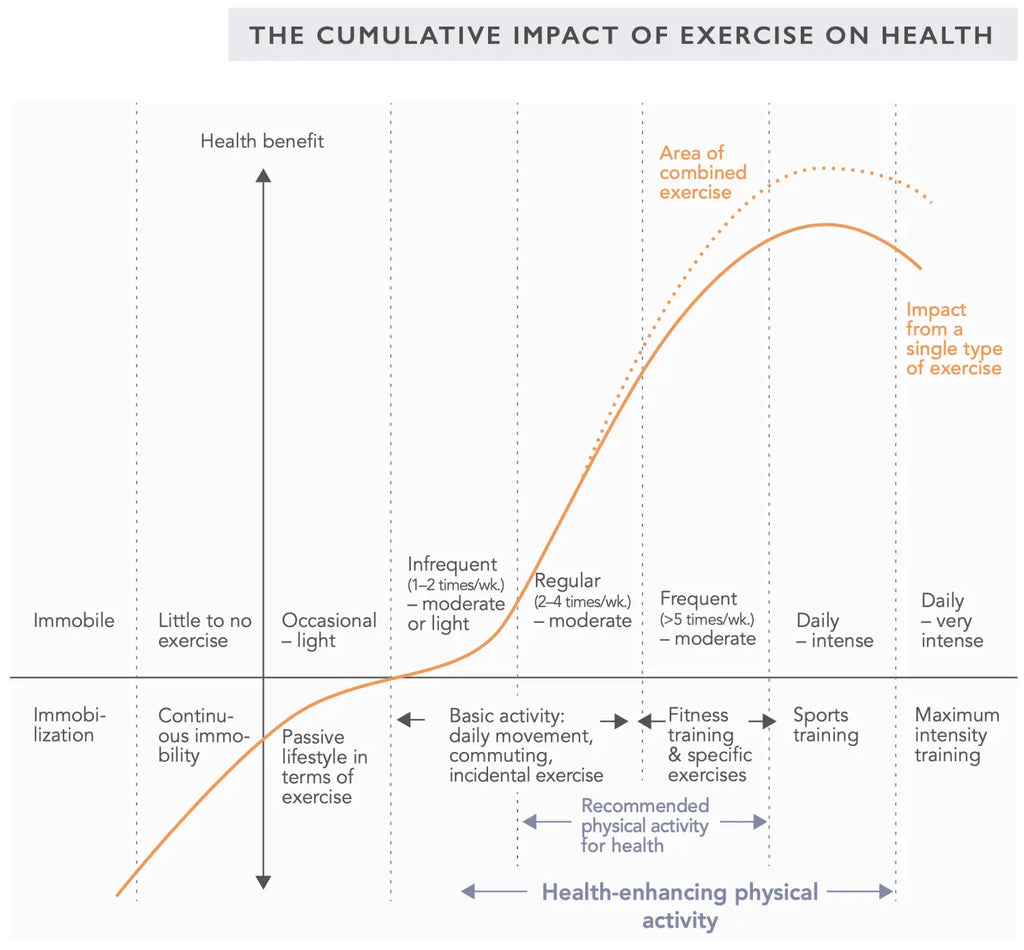
6) Meditation & Breathwork
Longevity Benefits
- Telomeres: Zen Meditation and Loving-Kindness Meditation are linked to longer telomere lengths and increased telomerase activity.
- Stress Reduction: Meditation and mindfulness lower cortisol levels and enhance emotional regulation.
- Physical Health: Deep breathing exercises improve respiratory efficiency and cardiovascular health.
- Cognitive Functions: Mindfulness meditation enhances cognitive functions, including attention, working memory, and executive function.
Daily Meditation & Breathwork Regimen:
- Morning: 15 minutes of meditation with daily intention & 3 rounds of Wim Hof Method breathwork, preferably in an infrared sauna.
- Throughout the Day: Nasal breathing, including during cardio exercises and HIIT sessions.
- Evening: 4-6 minutes of relaxed breathing in nature.
- Bedtime: 20-25 minutes of meditation focusing on energy alignment and deep cleansing.
7) Heat Alteration
Traditional Finnish Sauna
Regular sauna use offers numerous health benefits, including improved outcomes in cardiovascular diseases, stroke, cognitive disorders, and chronic pain. Sauna bathing activates the FOXO3 pathway, which enhances antioxidant defense, DNA repair, and stress resistance, and stimulates the Nrf2 pathway, increasing the production of detoxifying enzymes and antioxidants.
Sauna induces Heat Shock Proteins (HSPs), which promote autophagy and aid in removing damaged cellular components, thereby maintaining cellular health and homeostasis.
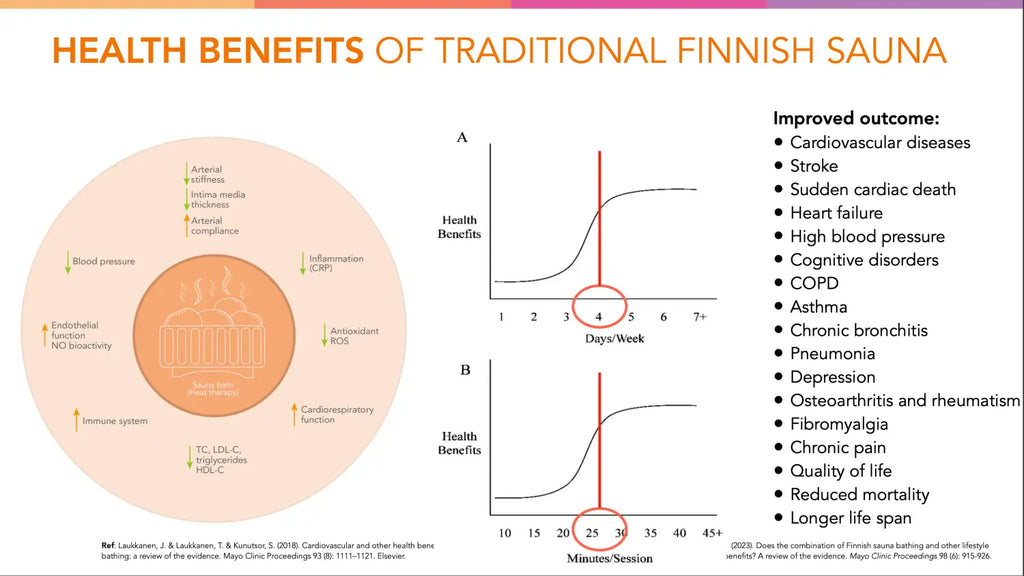
Cold Exposure
Cold exposure enhances metabolic health by improving glucose metabolism and energy expenditure. It also improves mental resilience and body composition. Cold exposure activates cold shock proteins (CSPs) that fix misfolded proteins and regulate gene expression during cold-induced stress.
8) Strategic Supplementation
Measure first:
The HoloHabits Biomarker Test Kit measures and corrects deficiencies, optimizing your health span one habit at a time. As NAD+ levels drop with age, monitoring and replenishing this molecule to maintain cellular function is crucial.
Top 5 Basic Longevity Supplements
- Magnesium: Enhances cellular function, reduces inflammation, and prevents oxidative stress.
- Creatine Monohydrate: Preserves muscle mass, improves cognitive functions, and is neuroprotective.
- GlyNAC (Glycine and N-Acetylcysteine): Improves mitochondrial function, reduces oxidative stress, and decreases inflammation.
- Omega-3 Long-Chain Fatty Acids: Supports cardiovascular health, cognitive functions, and recovery.
- Taurine: Enhances organ function, reduces oxidative stress, and mitigates age-related diseases and inflammation.
9) Intermittent Fasting & Calorie Restriction
Health and Metabolic Improvements: Intermittent fasting (IF) and calorie restriction (CR) are effective strategies for enhancing longevity. These practices improve insulin sensitivity, reduce body fat, and lower the risks of type 2 diabetes, cardiovascular diseases, cancer, and neurological disorders.
Cellular and Molecular Benefits: IF and CR enhance autophagy, mitochondrial function, and stress resistance while improving circadian rhythms and gut microbiota.
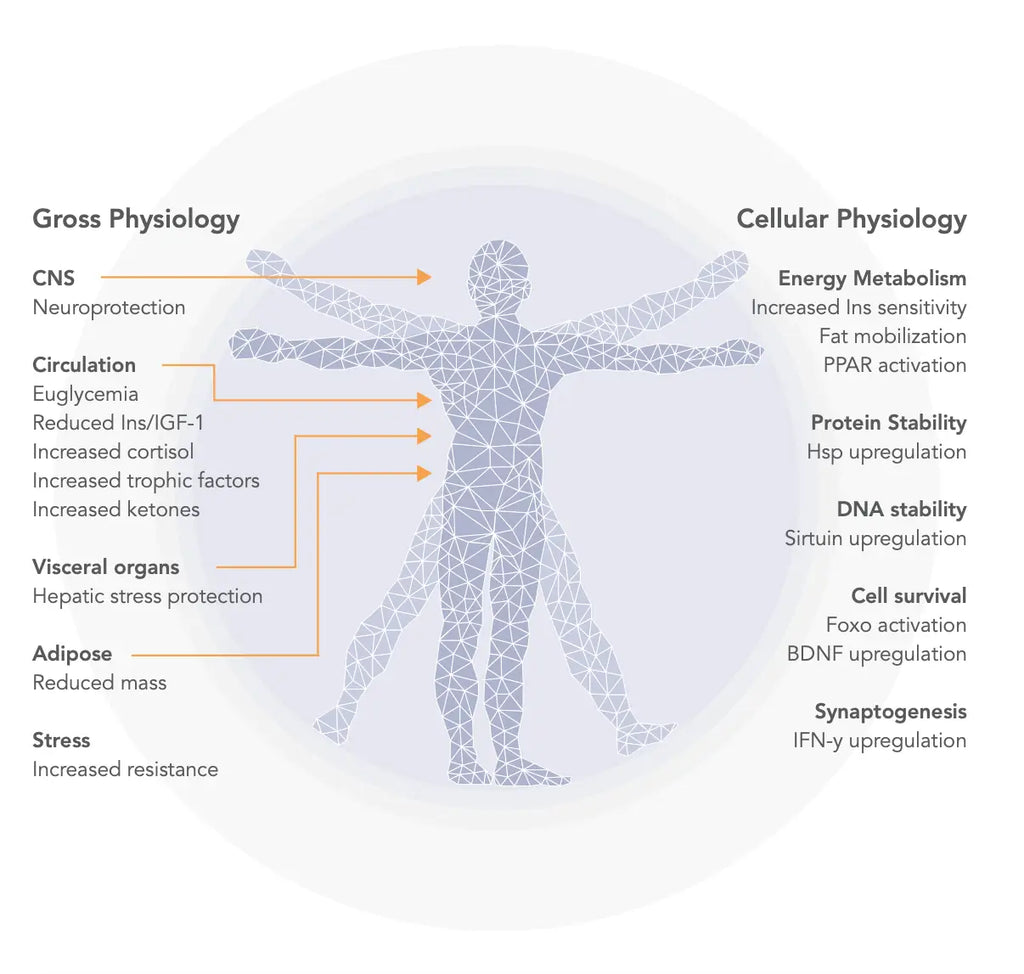
Reduction in Age-Related Diseases: Evidence suggests that modest calorie restriction (10-15%) can extend healthspan, slow age-related diseases, and potentially increase life expectancy by 1-5 years.
10) Photobiomodulation
Red Light & Near-Infrared Light Therapy:
Photobiomodulation involves using red and near-infrared light to promote cellular health, enhance brain functions, and reduce inflammation. This therapy improves mitochondrial and vascular health, supports nerve healing, and balances gut microbiota, contributing to longevity.
Neuroprotective and Cognitive Benefits: Photobiomodulation enhances cognitive functions, including mitochondrial and vascular health, electrophysiological activity and cognitive performance.
See all Biohacker's photobiomodulation devices here.

Summary: A Holistic Approach to Longevity
Adopting a holistic approach and incorporating these ten habits into your daily routine is crucial to optimizing your health and extending your lifespan. You can significantly enhance your longevity and health by prioritizing sleep, aligning with your circadian rhythm, engaging in regular physical activity, connecting with nature, personalizing your diet, and using advanced interventions like strategic supplementation and photobiomodulation.
Optimal Sleep and Circadian Rhythm:
Prioritize 7-8 hours of quality sleep and align your activities with natural circadian rhythms to enhance cognitive function, reduce inflammation and support metabolic processes.
Daily Physical Activity and Nature Connection:
Engage in regular exercise and spend time in nature to improve cardiovascular health, boost mood and strengthen the immune system.
Personalized Nutrition and Strategic Supplementation:
Follow a Mediterranean-style diet with essential micronutrients and use supplements to support overall health and longevity.
Meditation, Heat Alteration, and Sunlight Exposure:
Practice daily meditation, utilize heat alteration methods like saunas, and ensure regular sunlight exposure to reduce stress, enhance mental health, and support cellular repair.
Start making small, consistent changes today, and consider using the Holohabits Biomarker Test Kit to personalize your approach further.
Optimize Your Healthspan—One Habit at a Time!
For more information and personalized guidance, visit www.holohabits.com.
Scientific References:
- Carroll, J. et al. (2016). Partial sleep deprivation activates the DNA damage response (DDR) and the senescence-associated secretory phenotype (SASP) in aged adult humans. Brain, behavior, and immunity, 51, 223-229.
- Pinilla, L. et al. (2021). Association of obstructive sleep apnea with the aging process. Annals of the American Thoracic Society, 18(9), 1540-1547.
- Hafycz, J. M., & Naidoo, N. N. (2019). Sleep, aging, and cellular health: aged-related changes in sleep and protein homeostasis converge in neurodegenerative diseases. Frontiers in Aging Neuroscience, 11, 140.
- Grubb, S., & Lauritzen, M. (2019). Deep sleep drives brain fluid oscillations. Science, 366(6465), 572-573.
- Irwin, M. R. (2015). Why sleep is important for health: a psychoneuroimmunology perspective. Annual review of psychology, 66, 143-172.
- Cappuccio, F. P., D'Elia, L., Strazzullo, P., & Miller, M. A. (2010). Sleep duration and all-cause mortality: a systematic review and meta-analysis of prospective studies. Sleep, 33(5), 585-592.
- Hood, S., & Amir, S. (2017). The aging clock: circadian rhythms and later life. The Journal of clinical investigation, 127(2), 437-446.
- van den Berg, R. et al. (2017). Familial longevity is characterized by high circadian rhythmicity of serum cholesterol in healthy elderly individuals. Aging cell, 16(2), 237-243.
- Froy, O. (2011). Circadian rhythms, aging, and life span in mammals. Physiology, 26(4), 225-235.
- Liu, F., & Chang, H. C. (2017). Physiological links of circadian clock and biological clock of aging. Protein & cell, 8(7), 477-488.
- Shen, J., & Tower, J. (2019). Effects of light on aging and longevity. Ageing research reviews, 53, 100913.
- Van der Rhee, H. J., de Vries, E., & Coebergh, J. W. (2016). Regular sun exposure benefits health. Medical hypotheses, 97, 34-37.
- Lindqvist, P. G., Epstein, E., & Landin-Olsson, M. (2022). Sun exposure-hazards and benefits. Anticancer research, 42(4), 1671-1677.
- Hartig, T. et al. (2003). Tracking restoration in natural and urban field settings. Journal of Environmental Psychology 23 (2): 109–123.
- Rantakokko M, Keskinen KE, Kokko K, Portegijs E. Nature diversity and well-being in old age. Aging Clin Exp Res. 2017 Jul 11.
- Maas J, Verheij RA, de Vries S, Spreeuwenberg P, Schellevis FG, Groenewegen PP. Morbidity is related to a green living environment. J Epidemiol Community Health. 2009 Dec;63(12):967-73.
- Yang, Y. C., Boen, C., Gerken, K., Li, T., Schorpp, K., & Harris, K. M. (2016). Social relationships and physiological determinants of longevity across the human life span. Proceedings of the National Academy of Sciences, 113(3), 578-583.
- Chopik, W. (2018). The unique role of friendship for health and well-being across life and around the world. Innovation in Aging, 2(Suppl 1), 269.
- Menigoz, W., Latz, T. T., Ely, R. A., Kamei, C., Melvin, G., & Sinatra, D. (2020). Integrative and lifestyle medicine strategies should include Earthing (grounding): Review of research evidence and clinical observations. Explore, 16(3), 152-160.
- Trichopoulou, A., & Benetou, V. (2019). Impact of Mediterranean diet on longevity. Centenarians: An Example of Positive Biology, 161-168.
- Ekmekcioglu, C. (2020). Nutrition and longevity–From mechanisms to uncertainties. Critical reviews in food science and nutrition, 60(18), 3063-3082.
- Kitada, M., Ogura, Y., Monno, I., & Koya, D. (2019). The impact of dietary protein intake on longevity and metabolic health. EBioMedicine, 43, 632-640.
- Guasch-Ferré, M., Hu, F. B., Martínez-González, M. A., Fitó, M., Bulló, M., Estruch, R., ... & Salas-Salvadó, J. (2014). Olive oil intake and risk of cardiovascular disease and mortality in the PREDIMED Study. BMC medicine, 12, 1-11.
- Schwingshackl, L., Christoph, M., & Hoffmann, G. (2015). Effects of olive oil on markers of inflammation and endothelial function—a systematic review and meta-analysis. Nutrients, 7(9), 7651-7675.
- Kopp, M., & Burtscher, M. (2021). Aiming at optimal physical activity for longevity (OPAL). Sports Medicine-Open, 7(1), 70.
- Lee, D. H., Rezende, L. F., Joh, H. K., Keum, N., Ferrari, G., Rey-Lopez, J. P., ... & Giovannucci, E. L. (2022). Long-term leisure-time physical activity intensity and all-cause and cause-specific mortality: a prospective cohort of US adults. Circulation, 146(7), 523-534.
- Fung, E. et al. (2021). Predicting 10-year mortality in older adults using VO2max, oxygen uptake efficiency slope and frailty class. European journal of preventive cardiology, 28(10), 1148-1151.
- Ajimsha, M. S., Al-Mudahka, N. R., & Al-Madzhar, J. A. (2015). Effectiveness of myofascial release: systematic review of randomized controlled trials. Journal of bodywork and movement therapies, 19(1), 102-112.
- Dal Farra, F., Risio, R. G., Vismara, L., & Bergna, A. (2021). Effectiveness of osteopathic interventions in chronic non-specific low back pain: A systematic review and meta-analysis. Complementary Therapies in Medicine, 56, 102616.
- Vickers, A. J., Vertosick, E. A., Lewith, G., MacPherson, H., Foster, N. E., Sherman, K. J., ... & Acupuncture Trialists' Collaboration (2018). Acupuncture for chronic pain: update of an individual patient data meta-analysis. The Journal of Pain, 19(5), 455-474.
- Alda, M., Puebla-Guedea, M., Rodero, B., Demarzo, M., Montero-Marin, J., Roca, M., & Garcia-Campayo, J. (2016). Zen meditation, length of telomeres, and the role of experiential avoidance and compassion. Mindfulness, 7, 651-659.
- Goyal, M. et al. (2014). Meditation programs for psychological stress and well-being: a systematic review and meta-analysis. JAMA internal medicine, 174(3), 357-368.
- Brown, R. P., & Gerbarg, P. L. (2009). Yoga breathing, meditation, and longevity. Annals of the New York Academy of Sciences, 1172(1), 54-62.
- Malinowski, P., Moore, A. W., Mead, B. R., & Gruber, T. (2017). Mindful aging: the effects of regular brief mindfulness practice on electrophysiological markers of cognitive and affective processing in older adults. Mindfulness, 8, 78-94.meditation, length of telomeres, and the role of experiential avoidance and compassion. Mindfulness, 7, 651-659.
- Laukkanen, J. & Laukkanen, T. & Kunutsor, S. (2018). Cardiovascular and other health benefits of sauna bathing: a review of the evidence. Mayo Clinic Proceedings 93 (8): 1111–1121. Elsevier.
- Kunutsor, S. K., & Laukkanen, J. A. (2023, June). Does the combination of Finnish sauna bathing and other lifestyle factors confer additional health benefits? A review of the evidence. In Mayo clinic proceedings (Vol. 98, No. 6, pp. 915-926). Elsevier.
- Fasano, C., Disciglio, V., Bertora, S., Lepore Signorile, M., & Simone, C. (2019). FOXO3a from the nucleus to the mitochondria: a round trip in cellular stress response. Cells, 8(9), 1110.
- Patrick, R. P., & Johnson, T. L. (2021). Sauna use as a lifestyle practice to extend healthspan. Experimental gerontology, 154, 111509.
- Phadtare, S., Alsina, J., & Inouye, M. (1999). Cold-shock response and cold-shock proteins. Current opinion in microbiology, 2(2), 175-180.
- van Marken Lichtenbelt, W., Kingma, B., Van Der Lans, A., & Schellen, L. (2014). Cold exposure–an approach to increasing energy expenditure in humans. Trends in Endocrinology & Metabolism, 25(4), 165-167.
- Espeland, D., de Weerd, L., & Mercer, J. B. (2022). Health effects of voluntary exposure to cold water–a continuing subject of debate. International journal of circumpolar health, 81(1), 2111789.
- Lunt, H. C., Barwood, M. J., Corbett, J., & Tipton, M. J. (2010). ‘Cross‐adaptation’: habituation to short repeated cold‐water immersions affects the response to acute hypoxia in humans. The Journal of physiology, 588(18), 3605-3613.
- Mäkinen, T. M., Mäntysaari, M., Pääkkönen, T., Jokelainen, J., Palinkas, L. A., Hassi, J., ... & Rintamäki, H. (2008). Autonomic nervous function during whole-body cold exposure before and after cold acclimation. Aviation, space, and environmental medicine, 79(9), 875-882.
- de Oliveira Ottone, V., de Castro Magalhães, F., de Paula, F., Avelar, N. C. P., Aguiar, P. F., da Matta Sampaio, P. F., ... & Rocha-Vieira, E. (2014). The effect of different water immersion temperatures on post-exercise parasympathetic reactivation. PLoS One, 9(12), e113730.
- Barbagallo, M., Veronese, N., & Dominguez, L. J. (2021). Magnesium in aging, health and diseases. Nutrients, 13(2), 463.
- Kreider, R. B., & Stout, J. R. (2021). Creatine in health and disease. Nutrients, 13(2), 447.
- Kumar, P. et al. (2023). Supplementing glycine and N-acetylcysteine (GlyNAC) in older adults improves glutathione deficiency, oxidative stress, mitochondrial dysfunction, inflammation, physical function, and aging hallmarks: a randomized clinical trial. The Journals of Gerontology: Series A, 78(1), 75-89.
- Santulli, G., Kansakar, U., Varzideh, F., Mone, P., Jankauskas, S. S., & Lombardi, A. (2023). Functional role of taurine in aging and cardiovascular health: an updated overview. Nutrients, 15(19), 4236.
- Troesch, B. et al. (2020). Expert opinion on benefits of long-chain omega-3 fatty acids (DHA and EPA) in aging and clinical nutrition. Nutrients, 12(9), 2555.
- Dorling, J. L., Martin, C. K., & Redman, L. M. (2020). Calorie restriction for enhanced longevity: the role of novel dietary strategies in the present obesogenic environment. Ageing research reviews, 64, 101038.
- Stekovic, S. et al. (2019). Alternate day fasting improves physiological and molecular markers of aging in healthy, non-obese humans. Cell metabolism, 30(3), 462-476.
- Hu, D., Xie, Z., Ye, Y., Bahijri, S., & Chen, M. (2020). The beneficial effects of intermittent fasting: an update on mechanism, and the role of circadian rhythm and gut microbiota. Hepatobiliary Surgery and Nutrition, 9(5), 597.
- Flanagan, E. W., Most, J., Mey, J. T., & Redman, L. M. (2020). Calorie restriction and aging in humans. Annual review of nutrition, 40,105-133.
- dos Santos Cardoso, F., Gonzalez-Lima, F., & da Silva, S. G. (2021). Photobiomodulation for the aging brain. Ageing Research Reviews, 70, 101415.
- Ravera, S., Colombo, E., Pasquale, C., Benedicenti, S., Solimei, L., Signore, A., & Amaroli, A. (2021). Mitochondrial bioenergetic, Photobiomodulation and trigeminal branches nerve damage, What’s the connection? A review. International Journal of Molecular Sciences, 22(9), 4347.
- Hamblin, M. R. (2018). Mechanisms and mitochondrial redox signaling in photobiomodulation. Photochemistry and photobiology, 94(2), 199-212.
- Liebert, A., Bicknell, B., Johnstone, D. M., Gordon, L. C., Kiat, H., & Hamblin, M. R. (2019). “Photobiomics”: can light, including photobiomodulation, alter the microbiome?. Photobiomodulation, photomedicine, and laser surgery, 37(11), 681-693.





